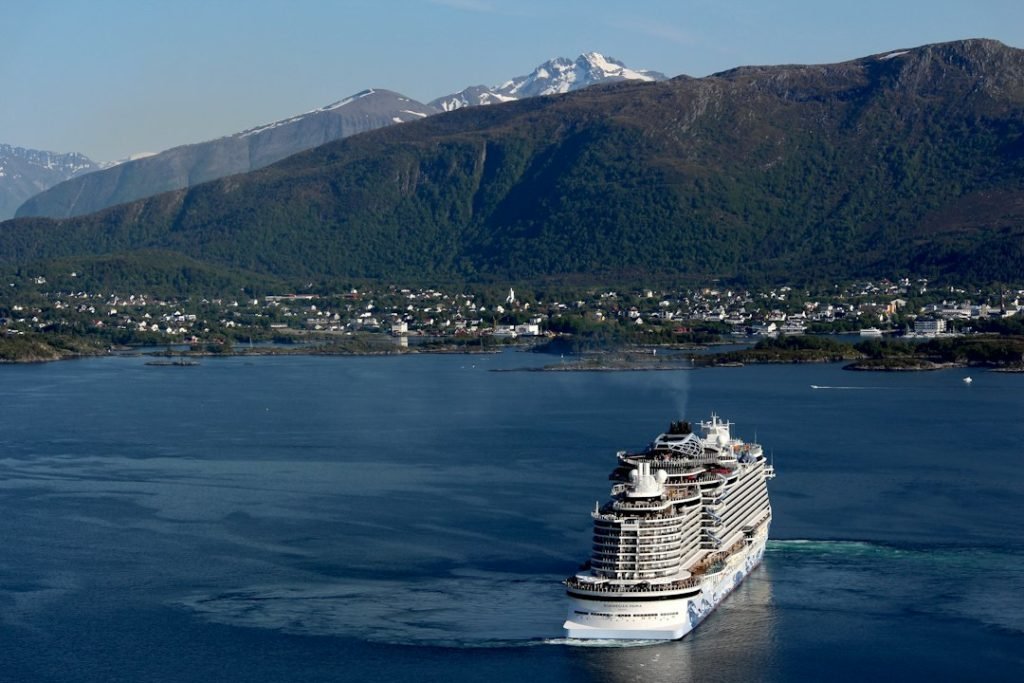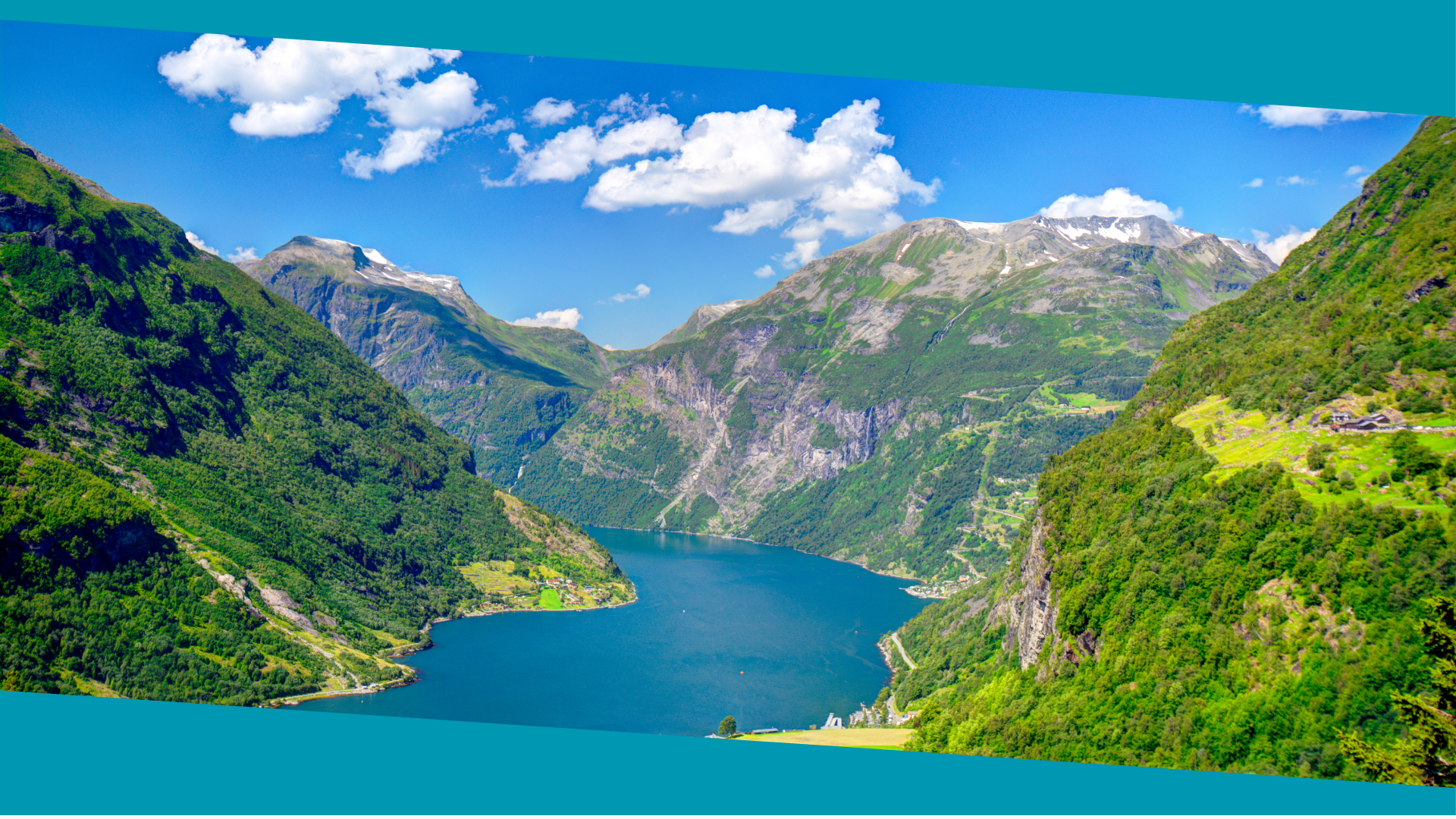

Exploring the Beauty of Norway: A Guide to Uncovering the Magic of Fjords, Fjells, and Fargerike Landskap
Norway, located in Northern Europe, is a country known for its stunning natural landscapes, rich cultural heritage, and vibrant cities. With a population of just over 5 million people, Norway is a sparsely populated country that offers visitors a chance to immerse themselves in the beauty of nature. From its majestic fjords to its high mountains and the mesmerizing Northern Lights, Norway is a land of unparalleled beauty that attracts tourists from all over the world.
Norway’s geography is characterized by its rugged coastline, deep fjords, and towering mountains. The country is bordered by Sweden to the east, Finland and Russia to the northeast, and Denmark to the south. Its long coastline stretches for over 25,000 kilometers and is dotted with numerous islands. The history of Norway dates back thousands of years, with evidence of human habitation dating back to the Stone Age. Throughout its history, Norway has been ruled by various kingdoms and has experienced periods of prosperity and turmoil.
Norway’s popularity as a tourist destination can be attributed to its breathtaking natural landscapes and outdoor activities. The country offers a wide range of activities for nature lovers, including hiking, skiing, fishing, and wildlife spotting. Additionally, Norway’s cities are known for their vibrant cultural scene, with museums, art galleries, and architectural landmarks that showcase the country’s rich heritage. Whether you’re seeking adventure in the great outdoors or looking to explore the cultural offerings of its cities, Norway has something for everyone.
Table of Contents
ToggleThe Majestic Fjords: Awe-Inspiring Landscapes of Norway
One of the most iconic features of Norway’s landscape is its fjords. Fjords are narrow inlets with steep sides or cliffs that were formed by glaciers millions of years ago. These natural wonders are found along the country’s coastline and offer visitors awe-inspiring views and unique experiences.
The fjords of Norway are not only visually stunning but also hold great significance in the country’s history and culture. They have served as transportation routes, sources of food, and even inspiration for art and literature. The most famous fjord in Norway is the Geirangerfjord, which is a UNESCO World Heritage site. This fjord is known for its deep blue waters, cascading waterfalls, and lush green mountainsides. Other popular fjords to visit include the Sognefjord, Hardangerfjord, and Nærøyfjord.
When visiting the fjords of Norway, there are several activities that you can enjoy. One of the most popular activities is taking a cruise or boat tour to explore the fjords up close. This allows you to fully appreciate their grandeur and take in the breathtaking scenery. You can also go kayaking or canoeing in the fjords, which provides a more intimate and immersive experience. Additionally, hiking trails are available along the fjords, allowing you to explore the surrounding mountains and enjoy panoramic views of the fjords from above.
Fjells: The High Mountains of Norway
In addition to its stunning fjords, Norway is also home to a vast mountainous region known as the Fjells. These high mountains offer visitors a chance to experience breathtaking landscapes and engage in various outdoor activities.
Norway’s mountain ranges are part of the Scandinavian Mountains, which extend across several countries in Northern Europe. The highest peak in Norway is Galdhøpiggen, standing at 2,469 meters above sea level. Other notable mountains include Snøhetta, Trolltunga, and Preikestolen.
Hiking is one of the most popular activities in Norway’s mountains. There are numerous hiking trails that cater to all levels of experience, from easy walks to challenging multi-day treks. The most famous hiking trail in Norway is the Trolltunga trail, which offers stunning views of the surrounding mountains and the fjords below. Another popular hiking destination is the Romsdalseggen Ridge, which provides panoramic views of the Romsdalen Valley.
During the winter months, Norway’s mountains transform into a winter wonderland, offering excellent skiing and snowboarding opportunities. The country has numerous ski resorts that cater to all levels of experience, from beginners to advanced skiers. Some of the most popular ski resorts in Norway include Hemsedal, Trysil, and Geilo. Cross-country skiing is also a popular activity, with well-maintained trails that allow you to explore the snowy landscapes at your own pace.
The Northern Lights: A Natural Phenomenon in Norway
One of the most mesmerizing natural phenomena in the world is the Northern Lights, also known as the Aurora Borealis. This spectacular light show can be seen in several countries, but Norway is one of the best places to witness this magical display.
The Northern Lights occur when charged particles from the sun collide with atoms in the Earth’s atmosphere, causing them to emit light. The lights appear as colorful streaks or curtains that dance across the night sky. The best time to see the Northern Lights in Norway is during the winter months, from September to March, when the nights are long and dark.
There are several places in Norway where you can witness the Northern Lights. Tromsø, located in northern Norway, is one of the most popular destinations for Northern Lights viewing. The city offers a range of activities such as dog sledding and snowmobiling, making it an ideal base for exploring the Arctic region. Another popular destination is Svalbard, an archipelago located between mainland Norway and the North Pole. Svalbard offers a unique opportunity to see the Northern Lights against a backdrop of snow-covered landscapes and polar bears.
To increase your chances of seeing the Northern Lights, it is recommended to stay in areas with minimal light pollution and clear skies. It is also important to check the weather forecast and plan your trip accordingly. While the Northern Lights are a natural phenomenon and can never be guaranteed, witnessing this magical display in Norway is an experience that will stay with you for a lifetime.
The Vibrant Cities of Norway: Oslo, Bergen, and Trondheim
While Norway is known for its natural beauty, the country’s cities also offer a vibrant cultural scene and a range of attractions for visitors to enjoy. The three major cities in Norway are Oslo, Bergen, and Trondheim, each with its own unique charm and character.
Oslo, the capital city of Norway, is a bustling metropolis that offers a mix of modern architecture and historical landmarks. The city is home to several world-class museums, including the Viking Ship Museum, the Munch Museum, and the National Gallery. Visitors can also explore the Royal Palace, stroll along the waterfront promenade of Aker Brygge, or visit the iconic Oslo Opera House.
Bergen, located on the southwestern coast of Norway, is known for its picturesque waterfront and colorful wooden houses. The city is surrounded by seven mountains and offers stunning views from its famous viewpoint, Mount Fløyen. Visitors can explore the historic Bryggen Wharf, visit the Bergenhus Fortress, or take a ride on the Fløibanen funicular to enjoy panoramic views of the city.
Trondheim, located in central Norway, is known for its rich history and medieval architecture. The city is home to Nidaros Cathedral, one of the most important pilgrimage sites in Northern Europe. Visitors can also explore the historic Bakklandet district, visit the Archbishop’s Palace Museum, or take a boat trip along the Nidelva River.
Each of these cities offers a range of cultural events, festivals, and culinary delights that showcase the best of Norwegian culture. Whether you’re interested in history, art, or simply exploring the vibrant city streets, Norway’s cities have something to offer every visitor.
Norway’s Rich Cultural Heritage: Museums, Art, and Architecture
Norway’s rich cultural heritage is evident in its museums, art galleries, and architectural landmarks. The country has a long history and a strong sense of national identity, which is reflected in its cultural offerings.
One of the most famous museums in Norway is the Viking Ship Museum in Oslo. This museum houses three well-preserved Viking ships that were excavated from burial mounds. Visitors can learn about the Viking Age and see artifacts such as weapons, tools, and household items. Another notable museum is the Munch Museum, which is dedicated to the works of Norwegian artist Edvard Munch. The museum houses the largest collection of Munch’s paintings and drawings in the world.
In addition to museums, Norway is also home to a vibrant art scene. The country has produced many renowned artists, including Edvard Munch and Gustav Vigeland. Visitors can explore art galleries such as the National Gallery in Oslo or visit the Vigeland Sculpture Park, which showcases over 200 sculptures by Gustav Vigeland.
Norway’s architecture is also worth exploring, with a mix of traditional wooden buildings and modern designs. The country is known for its stave churches, which are wooden churches built in the Middle Ages. These churches are characterized by their intricate carvings and unique architectural style. One of the most famous stave churches in Norway is the Urnes Stave Church, which is a UNESCO World Heritage site.
Outdoor Adventures in Norway: Hiking, Skiing, and Fishing
Norway’s stunning natural landscapes provide the perfect backdrop for outdoor adventures. Whether you’re an adrenaline junkie or simply enjoy being surrounded by nature, Norway offers a wide range of activities for outdoor enthusiasts.
Hiking is one of the most popular activities in Norway, with numerous trails that cater to all levels of experience. From easy walks to challenging multi-day treks, there is something for everyone. The country’s national parks, such as Jotunheimen and Rondane, offer stunning landscapes and well-marked trails. The Trolltunga trail, located near Odda, is one of the most famous hiking trails in Norway and offers breathtaking views of the surrounding mountains and fjords.
During the winter months, Norway’s mountains transform into a winter wonderland, offering excellent skiing and snowboarding opportunities. The country has numerous ski resorts that cater to all levels of experience, from beginners to advanced skiers. Hemsedal, Trysil, and Geilo are some of the most popular ski resorts in Norway. Cross-country skiing is also a popular activity, with well-maintained trails that allow you to explore the snowy landscapes at your own pace.
Fishing is another popular outdoor activity in Norway, thanks to its abundance of lakes, rivers, and coastline. The country is known for its excellent salmon fishing, with several rivers offering world-class fishing opportunities. Additionally, Norway’s coastline provides ample opportunities for sea fishing and deep-sea fishing. Whether you’re a seasoned angler or a beginner, fishing in Norway is an experience not to be missed.
The Unique Cuisine of Norway: Seafood, Game, and Traditional Dishes
Norwegian cuisine is influenced by its geography and climate, with an emphasis on fresh ingredients and traditional cooking methods. The country’s cuisine is known for its seafood, game meat, and traditional dishes that have been passed down through generations.
Seafood plays a prominent role in Norwegian cuisine, thanks to the country’s long coastline and rich fishing tradition. Salmon, cod, herring, and shrimp are some of the most popular seafood options. Smoked salmon, known as gravlaks, is a traditional Norwegian dish that is often served with mustard sauce and dill. Another popular dish is lutefisk, which is dried fish that has been soaked in lye and then boiled or baked.
Game meat is also a common ingredient in Norwegian cuisine, particularly in the northern regions of the country. Reindeer meat, elk, and venison are popular choices and are often served in stews or as steaks. Game birds such as grouse and ptarmigan are also commonly eaten.
Traditional Norwegian dishes include fårikål, which is a stew made with lamb and cabbage, and raspeballer, which are potato dumplings served with bacon and lingonberry jam. Rømmegrøt, a sour cream porridge, is another traditional dish that is often served with butter and sugar.
When visiting Norway, be sure to try some of these traditional dishes and experience the unique flavors of Norwegian cuisine. Many restaurants in Norway offer a range of traditional dishes made with locally sourced ingredients.
The Quirky Traditions of Norway: Bunad, Stave Churches, and Sami Culture
Norway is known for its quirky traditions and unique cultural heritage. From traditional costumes to ancient churches and indigenous Sami culture, Norway offers visitors a chance to experience its rich traditions.
One of the most iconic symbols of Norwegian culture is the bunad, a traditional costume worn on special occasions such as weddings and national holidays. Each region in Norway has its own unique bunad design, with intricate embroidery and patterns that reflect the local traditions and history. The bunad is often passed down through generations and is considered a treasured family heirloom.
Stave churches are another unique feature of Norwegian culture. These wooden churches were built during the Middle Ages and are characterized by their intricate carvings and unique architectural style. The stave churches are often located in remote areas and are still used for religious services today. The Urnes Stave Church, located in Luster, is a UNESCO World Heritage site and is considered one of the most beautiful stave churches in Norway.
The indigenous Sami culture is an important part of Norway’s cultural heritage. The Sami people have inhabited the northern regions of Norway, Sweden, Finland, and Russia for thousands of years. They have their own language, traditions, and way of life. Visitors to Norway can learn about Sami culture through various activities such as reindeer sledding, visiting Sami villages, and attending cultural events.
These quirky traditions and cultural heritage add to the charm and uniqueness of Norway. Exploring these traditions allows visitors to gain a deeper understanding of the country’s history and its people.
Planning Your Trip to Norway: Tips and Recommendations for a Memorable Experience
Planning a trip to Norway can be an exciting but daunting task. Here are some tips and recommendations to help you make the most of your trip and ensure a memorable experience:
1. Research and plan your itinerary: Norway offers a wide range of attractions and activities, so it’s important to research and plan your itinerary in advance. Decide which cities, fjords, mountains, or cultural sites you want to visit and allocate enough time for each.
2. Pack for the weather: Norway’s weather can be unpredictable, so it’s important to pack layers and be prepared for all types of weather conditions. Even in the summer months, temperatures can drop significantly, especially in the evenings. It is advisable to pack warm clothing such as sweaters, jackets, and long pants, as well as waterproof outerwear like raincoats and boots. Additionally, it is essential to bring items like hats, gloves, and scarves to protect against cold winds. In the winter, when temperatures can reach below freezing, it is crucial to pack thermal clothing, heavy coats, and insulated boots to stay warm. Overall, being prepared for varying weather conditions will ensure a comfortable and enjoyable trip to Norway.
If you’re interested in expanding your Norwegian vocabulary, you might want to check out this article on Norwegian food vocabulary. It’s important to know the words for different types of food and ingredients if you want to fully immerse yourself in Norwegian culture and cuisine. From traditional dishes to popular ingredients, this article covers it all. So whether you’re planning a trip to Norway or simply want to impress your friends with your culinary knowledge, this article is a must-read. Click here to read more.

Norwegian A1-A2
Course Overview The Norwegian A1-A2 course is an online program focused on teaching essential Norwegian grammar and vocabulary. It includes a variety of materials and topics, with opportunities to interact with a Norwegian teacher entirely online. Curriculum Highlights The course covers key areas such as grammar and vocabulary and topics such as family, daily life, education, work, traditions, and leisure activities. Who Should Enroll? This course is perfect for beginners or those at the A1 or A2 levels who want to improve their Norwegian skills. What You Get Access to the full Norwegian A1-A2 course. A monthly 1-hour online conversation with a teacher. Many written and oral assignments. Comprehensive information on Norwegian grammar, Norwegian vocabulary and how to use them, important sentence structures, etc. Tips on additional resources to further enhance your Norwegian learning.
0 students enrolled
Last updated Dec 10th, 2024
If you want to learn Norwegian, you can register for classes here. We look forward to hearing from you and helping you become fluent in Norwegian.






